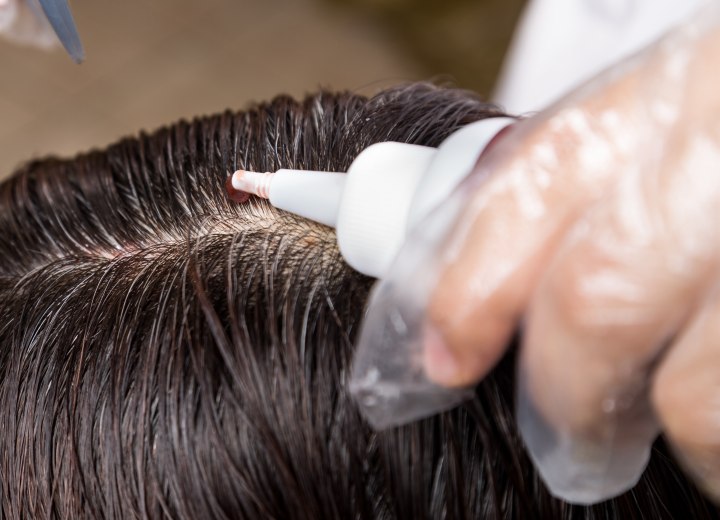New Hair Color

She wants to go with a darker shade of brown but definitely doesn't want any bleach on her hair. Could you provide some guidance on whether hair coloring is safe for her at this point and maybe suggest some appropriate options? I'd really appreciate any advice you can offer. Thank you so much for your help.
A: When it comes to hair coloring after cancer treatment, many oncologists generally advise waiting about 6 months after completing chemotherapy before applying any chemical treatments to the hair. This allows time for the new hair growth to strengthen and for the scalp to fully recover. However, since your mother's hair has already grown back nicely, she's likely past this waiting period.
For context, there are three main categories of hair color products available on the market: temporary colors, semi-permanent colors, and permanent colors. Temporary colors coat the outside of the hair shaft and wash out completely with the next shampoo. Semi-permanent colors, like Harmony, partially penetrate the hair cuticle but don't contain ammonia or require a developer, making them gentler on the hair. Permanent colors, which include highlighting and bleaching processes, penetrate deeply into the hair shaft and create lasting color changes that remain until the hair grows out and is cut off or covered with another color.
Since your mother wants to avoid bleach and simply go darker, semi-permanent or demi-permanent color would be ideal choices. These deposit-only formulas don't contain ammonia and won't lighten her natural hair color. Many cancer survivors prefer these gentler formulations, especially in the first year or so after treatment.
If your mother wants to explore alternatives to Harmony, several mainstream brands offer excellent semi-permanent options. L'Oréal, Clairol, Wella, and Madison Reed all produce quality deposit-only color products. Some brands even offer ammonia-free permanent color options if she eventually decides she wants something longer-lasting.
For the most natural-looking results, I'd recommend staying within two to three shades of her natural hair color, especially when going darker. It's important to remember that deposit-only hair colors will blend with her natural hair color rather than completely replacing it. This "stacking" effect means the result might be darker than what's shown on the box, particularly if she chooses a shade that's already significantly darker than her natural color.
When selecting a product, pay close attention to the shade recommendations on the packaging. Most brands include photos or charts showing which natural hair colors work best with each shade they offer. This guidance helps prevent unexpected results.
Whichever route you choose, I suggest doing a patch test 48 hours before applying any new hair color product, even if it's a gentle formula. This helps ensure she won't have an allergic reaction, which is especially important since cancer treatments can sometimes change how the body responds to products she used without issues in the past.
©Hairfinder.com
See also:
Hair coloring
Hair color types